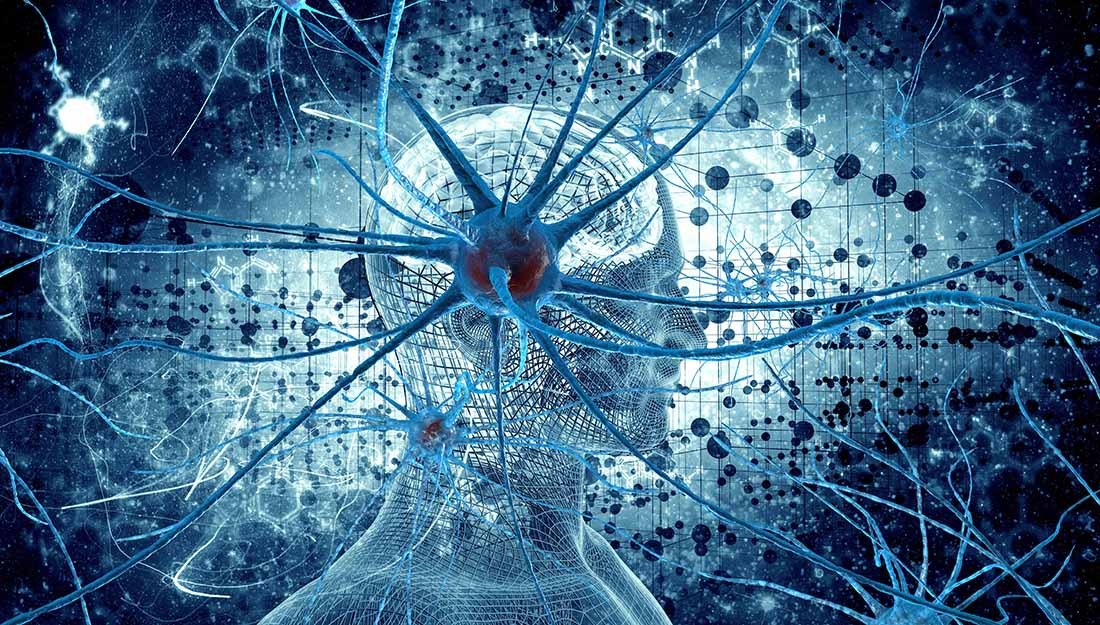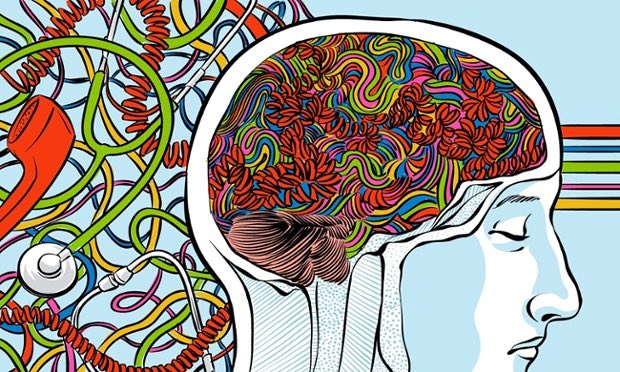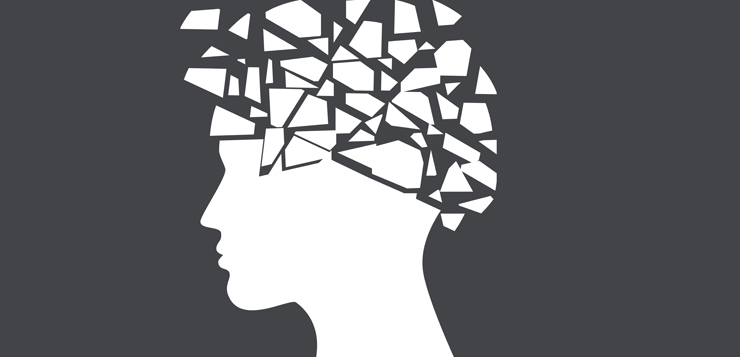Over the years, I’ve taken several psychiatric drugs, drank too much alcohol, and had numerous concussions – sometimes, all at once.
In other words, my brain has taken quite the beating.
Researchers used to think that if you damaged your brain like I did, you simply had to live with it.
But that’s no longer true.
They now know the brain is plastic and flexible, and it can heal and recover.
You’re not stuck with the brain you have.
You can actually change and improve it.
One way your brain repairs itself is through a process called synaptogenesis.
Synaptogenesis is the formation of new synapses in the brain.
Synapses are the connecting points between your 100 billion brain cells. You have trillions of synapses in your brain, and your brain cells communicate with one another across them (79).
The deterioration and loss of synapses is linked to a number of neurodegenerative diseases and mental health disorders, including Alzheimer's disease, depression, poor learning and memory, intellectual impairment and other cognitive deficits (83-87).
The good news is that researchers now know that synaptogenesis occurs in the brain throughout our entire lives (81-82).
And there are a number of ways you can support synaptogenesis, promote the formation of new brain synapses and increase brain synapses.
Below are 15 ways to do that.
Following these strategies can improve your mood, learning, memory and cognition.
1. Omega-3 Fatty Acids, Uridine and Choline
The formation of synapses depends on sufficient brain levels of three key nutrients – uridine, omega-3 fatty acids, and choline. These nutrients are synergistic, and if you take them taken together, they accelerate the formation of new synapses in the brain (66-67, 75-78).
Unfortunately, most people nowadays don’t get enough of these essential nutrients through their diet because very few foods in the Western diet actually contain them.
In fact, the uridine in food is not bioavailable, and no food has been shown to increase plasma levels of uridine (1).
That’s why I take a uridine monophosphate supplement sublingually to support the long-term health of my brain.
At the same time, I take a krill oil supplement and the Optimal Brain supplement, which includes CDP-Choline and Alpha GPC (two high-quality sources of choline). This ensures my brain is getting enough of omega-3 fatty acids and choline.
Several researchers have concluded that supplementing with all three nutrients can increase synaptic formation, increase brain synapses, and improve cognition, learning and memory, particularly in people with Alzheimer's disease (68-74).
Besides supplementation, I still encourage people to eat foods that contain omega-3 fatty acids and choline.
The best way to get omega-3 fatty acids from food is by eating more cold-water fish such as salmon, black cod, sablefish, sardines and herring. And the best food sources of choline include grass-fed beef liver and egg yolks. These foods are included in my Free Grocery Shopping Guide for Optimal Brain Health.
Taking uridine, choline and omega-3 fatty acids together can also promote the regeneration of myelin.
2. Low Level Laser Therapy
Low-level laser therapy (LLLT), or photobiomodulation, is a treatment that uses low-level (low-power) lasers or light-emitting diodes (LEDs) to stimulate brain cells, helping them function better.
Most doctors don't know about LLLT; but not every doctor.
Dr. Norman Doidge, a physician who teaches at the University of Toronto here in Canada, discusses the amazing effects of LLLT in his book The Brain’s Way of Healing.
One way that LLLT may help the brain is by encouraging synaptogenesis (12-15).
Researchers have found that LLLT treatment significantly stimulates the synthesis of synapsin-1 (a marker for synaptogenesis) and increases synaptogenesis in the cortex (16-17).
I previously wrote about my experience with low-level laser therapy here.
I use this device and shine the red and infrared light on my forehead for 5 minutes every day. I also shine it on other parts of my head and on my entire body, including on my thyroid, thymus gland and gut. I experience incredible benefits from doing this.
When I’m travelling, I take this smaller and more convenient device with me and shine it on my forehead.
I’ve also been using the Vielight Neuro Duo, which is a transcranial-intranasal headset with 810 nm of near infrared light. It penetrates deeper into brain tissue and is absorbed better by the central nervous system. If you decide to try a Vielight device, you can use the coupon code JORDANFALLIS for a 10% discount
Before trying LLLT, I highly recommend reading my full article about it first.
LLLT can also support mitochondria function, reduce brain fog, and increase blood flow to the brain.
3. Bacopa
Bacopa monniera is an adaptogenic herb with cognitive-enhancing effects.
Several studies show that it improves cognition, learning and memory by strengthening communications between brain cells. Both healthy and elderly people who take the herb experience improved attention, learning and memory (2-5).
Researchers believe that these improvements are because bacopa increases brain synapses and increases specific neuromolecular mechanisms that encourage and enhance synaptogenesis (18).
4. Exercise
Exercise is one of the best ways to promote the formation of new synapses.
Researchers have repeatedly found that physical activity encourages synaptogenesis and increases brain synapses (32-33).
Exercise also increases blood flow to the brain, promotes the regeneration of myelin, and can help reverse brain damage and cognitive decline.
So not surprisingly, many brain health experts recommend exercise as their number one piece of advice for optimal brain health.
My usual advice is to find a sport or exercise routine that you enjoy, so that you’ll stick with it consistently.
5. Magnesium Threonate
Magnesium is a vital mineral that participates in more than 300 biochemical reactions in your body, including neurotransmitter and hormonal activity, which can have a huge effect on your brain function.
Researchers have found that increasing magnesium levels in the brain improves learning and memory by promoting synaptogenesis and increasing brain synapses (25-26).
One study concluded that magnesium threonate increases the number of synaptic connections between brain cells and boosts the density of synapses (27).
Unfortunately, lot of people are deficient in magnesium today (6-8).
But there are a number of ways you can make sure you’re consuming enough.
First, make sure you’re eating magnesium-rich foods on a regular basis, including spinach, chard, pumpkin seeds, almonds, avocado, dark chocolate and bananas. These foods are included in my Free Grocery Shopping Guide for Optimal Brain Health.
Epsom salt baths are another great way to increase your body’s intake of magnesium.
But I also recommend a high-quality magnesium supplement.
Magnesium threonate is the best form of magnesium for increasing brain magnesium levels and forming new synapses.
Since most people are deficient, magnesium is one of the three supplements that I think everyone should be taking.
Magnesium can also help repair a leaky blood-brain barrier.
6. Intermittent Fasting
Fasting allows your digestive system to take a break and triggers a number of hormones that boost your body’s ability to repair itself.
On most days, I don’t eat breakfast at all, and then "break my fast" by eating my first meal of the day around 2 or 3 p.m. That means I eat all my food for the day within an 8-hour window.
There are many health benefits to doing this.
It can improve mitochondrial function, reduce brain fog, and help protect you from dementia.
And researchers have also found that fasting can trigger and enhance synaptogenesis (28-31).
The best way to start fasting is simply by eating dinner around 6, not eating anything after that before bed, and then eating a regular breakfast the next day. That should give you about 12-14 hours of fasting time.
7. Ginkgo Biloba
Ginkgo Biloba is a plant that has been used in China for thousands of years to treat a number of health problems. It’s one of the top-selling herbal supplements in the world, and it’s even a prescription herb in Germany.
It’s most commonly used to improve brain health because it’s been shown to increase brain blood flow and improve memory and attention in both healthy and unhealthy individuals. It even reduces the risk of dementia and Alzheimer’s disease and may also improve mood and mental energy (34).
Researchers have also discovered that it stimulates synaptogenesis and increases brain synapses (35).
Ginkgo Biloba is included in the Optimal Brain supplement.
8. Motor Learning
Motor learning is essentially when you learn something new that involves movement.
Complex processes occur in the brain in response to practicing or experiencing the new motor skill.
This results in changes to the central nervous system, which allows you to produce the movement again in the future.
Researchers have found that motor learning triggers synaptogenesis and generates new synapses in the cerebellar cortex of the brain (36-39).
Some activities that involve motor learning include learning how to play the piano, climbing trees, juggling, and playing table tennis.
When you engage in these activities, motor learning occurs, and you form new synapses in order to learn and solidify the new skill.
I have personally used a number of different neuroplasticity exercises that involve motor learning to promote synaptogenesis in my own brain.
9. Resveratrol
Resveratrol is a beneficial antioxidant and anti-inflammatory compound found in grapes, red wine, raspberries and dark chocolate.
Resveratrol is known to help prevent the development of neurodegenerative diseases.
And researchers are starting to understand why.
Resveratrol can help restore the integrity of the blood-brain barrier, support your mitochondria, and increase blood flow to the brain.
But it can also increase synaptogenesis.
Research shows the resveratrol promotes and enhances synaptogenesis (23-24).
Resveratrol is included in Optimal Energy.
10. Piracetam
Piracetam is a nootropic (cognitive-enhancing) supplement. It provides a mild boost to brain function and has a long history of being used to treat cognitive impairment in Europe, Asia and South America.
According to researchers, one way it improves cognition is by enhancing synaptogenesis and increasing brain synapses (9-10).
One study found that rats treated with piracetam had a higher number of synapses than rats not treated with piracetam (11).
Phenylpiracetam is an advanced version of piracetam and I found it to be even more effective. It also has impressive anti-anxiety and antidepressant effects.
Both piracetam and phenylpiracetam work best if you take them with a source of choline, either CDP-Choline or Alpha GPC.
Both CDP-Choline and Alpha GPC are included in the Optimal Brain supplement.
11. Quercetin
Quercetin is a bioflavonoid found in fruits and vegetables. It is one of the most widely consumed flavonoids in the human diet.
Quercetin has potent antioxidant action and is “neuroactive”, meaning it can affect brain function.
As a result, it can protect brain cells from oxidative stress and inhibit the pro-inflammatory molecules that are associated with many progressive brain disorders (45-46).
Researchers have also found that it stimulates synaptogenesis (48).
Red apples, onions and tomatoes have the high levels of quercetin. But you can also supplement with it if you want.
It’s interesting to note that quercetin increases the absorption of resveratrol, so it’s a good idea to take them both together if you want to increase synaptogenesis and form new brain synapses (47).
12. Intranasal Insulin
Insulin is one of the hormones that significantly affects brain function.
It has a number of important functions in the central nervous system, and researchers have found that it passes the blood-brain barrier and acts on insulin receptors directly within the brain.
In a new therapeutic approach, commercially-available insulin (Novalin R) is prepared and added to nasal spray bottles, and sprayed and inhaled through the nose to support brain and mental health.
Intranasal insulin has been reported to significantly enhance learning and memory, increase mental energy, reduce brain fog, improve mood, and lower anxiety and stress levels.
One possible mechanism is by increasing synaptogenesis.
Brain insulin receptors are found primarily in synapses, and insulin signaling contributes to synaptogenesis (19-21).
And the disruption of insulin action in the brain leads to impaired synaptogenesis (22).
If you’re interested in learning more about intranasal insulin, I previously wrote a full article about it here.
13. Progesterone
Progesterone is a natural steroid and sex hormone involved in the menstrual cycle and pregnancy.
It has a variety of important functions in the body, and even plays an important role in brain function.
Research shows that progesterone supports the normal development of brain cells and protects them from damage (40).
But many researchers have also found that progesterone promotes synaptogenesis (41-43).
In addition to its role as a natural hormone, progesterone can be taken as a medication, usually by women during menopause as part of their hormone replacement therapy.
14. Antioxidant Nutrients
Some nutrients have antioxidant effects in the body, and not consuming enough of them can reduce your rate of synaptogenesis.
Research shows that “synaptic membrane synthesis” depends on sufficient dietary intake of Vitamin C, Vitamin E, and the mineral selenium (64).
One study found that synaptogenesis was significantly enhanced by supplementing with omega-3 fatty acids, uridine, Vitamin C, Vitamin E, and selenium. But it wasn’t enhanced as much with omega-3 fatty acids and uridine alone, suggesting that Vitamin C, Vitamin E, and selenium play a key role in synaptogenesis (65).
I get these antioxidant nutrients from a number of sources.
In addition to getting Vitamin C from fruits and vegetables, I take at least 500 mg of supplemental Vitamin C every day. At one point, I was actually taking up to 10 grams of Vitamin C every day as an experiment, but that’s not necessary unless you find it really helps you.
For selenium, I make sure I eat brazil nuts regularly, as they are the richest source. But I also take some extra selenium in supplement form.
For Vitamin E, good food sources include almonds, spinach, sweet potatoes, avocados, olive oil, sunflower seeds and butternut squash. It’s also included in the Optimal Antiox supplement.
Besides increasing synaptogenesis, antioxidants can also protect your brain from alcohol and help reverse brain damage.
15. BONUS: 4 Things to Avoid
It’s not just what you do, but also what you avoid that can impact your rate of synaptogenesis.
Researchers have found that certain compounds can impair synaptogenesis and inhibit the formation of new synapses in the brain.
So besides trying to implement the 14 steps above, you should also try to avoid:
Bisphenol A – This compound is found in plastic bottles and containers, food and beverage cans, and other common consumer products, such as CDs, DVDs and sales receipts. Researchers have found that it impairs synaptogenesis in the brain (49). That’s why I recommend you only eat and drink out of glass, ceramic and stainless steel. Avoid all canned food and plastic containers. BPA-free plastic isn’t much better for you and can still disrupt hormonal health.
Lead – Lead is a heavy metal that can accumulate in the body and negatively affect brain function. Research shows that lead exposure can interfere with the formation of brain synapses (55-59). So it’s definitely a good idea to reduce your exposure to sources of lead. One way is by using an infrared sauna regularly.
Gabapentin – Gabapentin is a medication used to treat epilepsy, neuropathic pain, hot flashes, and restless legs syndrome. Researchers have found that it halts the formation of new synapses (80).
Stress – Chronic stress decreases synaptogenesis and decreases the number of synapse connections (88-89). Here are 20 ways to lower cortisol, your body’s main stress hormone. These two biofeedback devices are my favourite ways to reduce stress.
Enjoy This Article? You Might Also Like My FREE Food Guide for Optimal Brain and Mental Health!
References:
(1) https://www.ncbi.nlm.nih.gov/pmc/articles/PMC4011061/
(2) https://www.ncbi.nlm.nih.gov/pubmed/20590480
(3) https://www.ncbi.nlm.nih.gov/pubmed/18611150
(4) https://www.ncbi.nlm.nih.gov/pubmed/12093601
(5) https://www.ncbi.nlm.nih.gov/pubmed/18683852
(6) http://www.tandfonline.com/doi/abs/10.1080/00048670802534408
(7) http://www.ncbi.nlm.nih.gov/pubmed/10746516
(8) http://www.ncbi.nlm.nih.gov/pubmed/9861593
(9) https://www.ncbi.nlm.nih.gov/pubmed/17710536/
(10) https://www.ncbi.nlm.nih.gov/pmc/articles/PMC2944646/
(12) https://www.ncbi.nlm.nih.gov/pmc/articles/PMC5066074/
(13) https://www.ncbi.nlm.nih.gov/pubmed/29131369
(14) http://iopscience.iop.org/article/10.1088/2040-8986/19/1/013003/meta
(16) http://www.ncbi.nlm.nih.gov/pubmed/25196192
(17) https://www.ncbi.nlm.nih.gov/pmc/articles/PMC5379854/
(18) https://www.ncbi.nlm.nih.gov/pubmed/27692172
(19) https://www.ncbi.nlm.nih.gov/pmc/articles/PMC3260944/
(20) https://www.ncbi.nlm.nih.gov/pubmed/18549783/
(21) https://www.ncbi.nlm.nih.gov/pubmed/19026743/
(22) http://diabetes.diabetesjournals.org/content/63/7/2232
(23) https://www.ncbi.nlm.nih.gov/pubmed/28957797
(24) https://www.karger.com/Article/Abstract/481611
(25) https://www.ncbi.nlm.nih.gov/pmc/articles/PMC4172865/
(26) https://www.ncbi.nlm.nih.gov/pubmed/20152124/
(28) https://www.ncbi.nlm.nih.gov/pubmed/22325203
(29) https://www.ncbi.nlm.nih.gov/pmc/articles/PMC3278709/
(30) http://www.intermittentfaster.com/intermittent-fasting-science/
(31) https://www.ncbi.nlm.nih.gov/pmc/articles/PMC2622429/
(32) https://www.ncbi.nlm.nih.gov/pmc/articles/PMC3865437/
(33) https://www.ncbi.nlm.nih.gov/pubmed/23973748
(34) https://www.ncbi.nlm.nih.gov/pmc/articles/PMC3679686/
(35) https://www.ncbi.nlm.nih.gov/pubmed/19661619
(36) http://www.pnas.org/content/87/14/5568
(37) http://www.ncbi.nlm.nih.gov/pmc/articles/PMC54366/
(38) http://www.ncbi.nlm.nih.gov/pubmed/11749086
(39) http://www.ncbi.nlm.nih.gov/pubmed/24304717
(40) https://www.ncbi.nlm.nih.gov/pubmed/10833057
(41) https://www.ncbi.nlm.nih.gov/pubmed/21308798
(42) https://www.ncbi.nlm.nih.gov/pubmed/11487645
(43) https://www.ncbi.nlm.nih.gov/pubmed/18308850
(44) http://online.liebertpub.com/doi/abs/10.1089/rej.2011.1170
(45) https://www.ncbi.nlm.nih.gov/pubmed/15319809
(46) https://www.karger.com/Article/Abstract/72357
(47) https://www.ncbi.nlm.nih.gov/pubmed/25669932
(48) https://www.ncbi.nlm.nih.gov/pubmed/19661619
(49) https://www.ncbi.nlm.nih.gov/pubmed/18048497
(50) https://en.wikipedia.org/wiki/Synaptogenesis
(52) https://www.sciencedirect.com/science/article/pii/S0005273603000245
(53) http://www2.cnrs.fr/en/201.htm
(56) https://www.ncbi.nlm.nih.gov/pmc/articles/PMC4084981/
(57) https://www.ncbi.nlm.nih.gov/m/pubmed/21192972/
(58) https://www.ncbi.nlm.nih.gov/pmc/articles/PMC3049857/
(59) https://www.ncbi.nlm.nih.gov/pmc/articles/PMC3076195/
(60) https://en.wikipedia.org/wiki/Synaptogenesis
(61) https://www.sciencedirect.com/science/article/pii/S0005273603000245
(64) https://www.ncbi.nlm.nih.gov/pubmed/28598848
(65) https://www.ncbi.nlm.nih.gov/pmc/articles/PMC5502840/
(66) http://www.ncbi.nlm.nih.gov/pmc/articles/PMC4011061/
(67) https://www.ncbi.nlm.nih.gov/pubmed/16055952
(68) https://www.ncbi.nlm.nih.gov/pubmed/19400698
(69) https://www.ncbi.nlm.nih.gov/pubmed/16631143
(70) http://wurtmanlab.mit.edu/static/pdf/1051.pdf
(71) https://www.ncbi.nlm.nih.gov/pmc/articles/PMC4011061/
(72) https://www.frontiersin.org/articles/10.3389/fnins.2017.00440/full
(73) https://www.ncbi.nlm.nih.gov/pubmed/12399581
(74) https://www.ncbi.nlm.nih.gov/pubmed/16880353
(75) https://www.ncbi.nlm.nih.gov/pubmed/27597963
(77) https://www.ncbi.nlm.nih.gov/pubmed/19262950
(79) https://www.ncbi.nlm.nih.gov/pubmedhealth/PMHT0024276/
(81) https://www.sciencedaily.com/releases/2013/10/131010205325.htm
(83) https://www.ncbi.nlm.nih.gov/pmc/articles/PMC3059649/
(84) https://www.ncbi.nlm.nih.gov/pmc/articles/PMC3405673/
(85) https://www.ncbi.nlm.nih.gov/pmc/articles/PMC5405628/
(86) https://www.ncbi.nlm.nih.gov/pmc/articles/PMC3491115/
(87) https://www.ncbi.nlm.nih.gov/pmc/articles/PMC4424898/
(88) https://www.ncbi.nlm.nih.gov/pmc/articles/PMC4432471/















